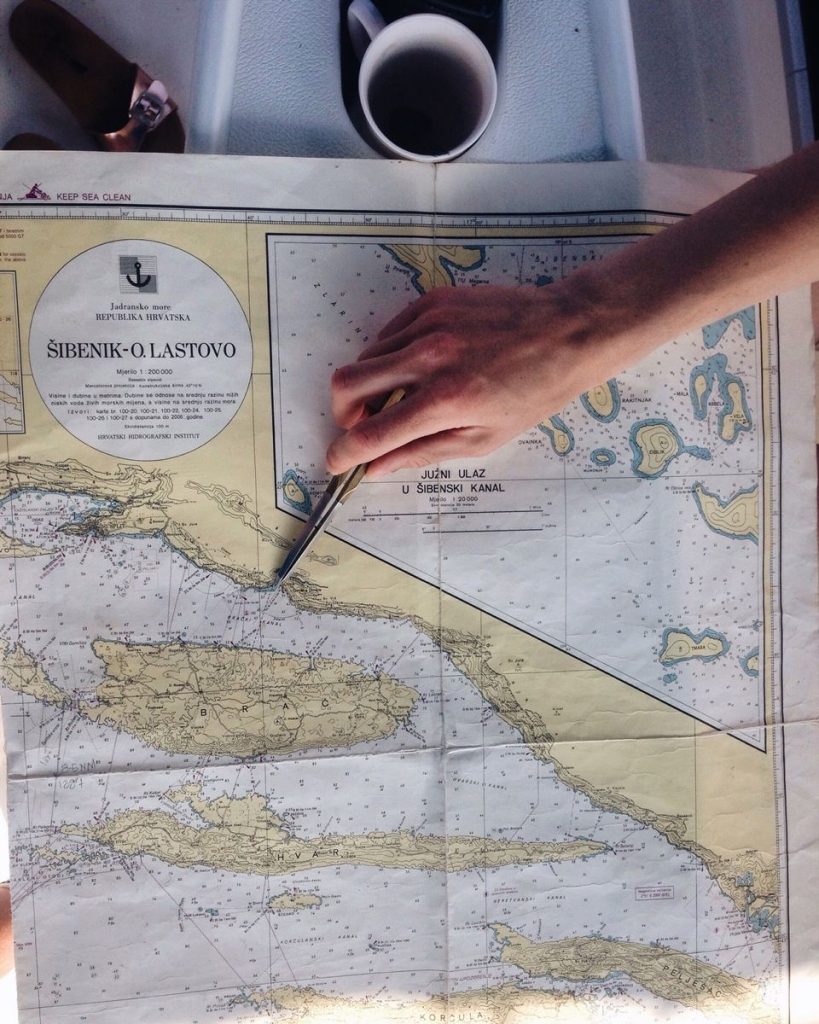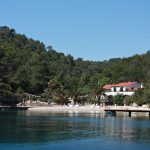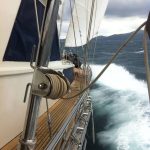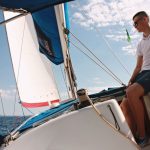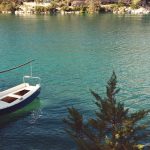I spent last week on a week-long sailing trip as part of Sail Croatia’s Green Sail tour. You can read more about it here. It was one of the best weeks of my life, but it was also my first time sailing so I wasn’t sure about anything. I’d never really given sailing much thought, so preparing for the trip actually took some time, because I had no idea what to expect. Would there be crockery, am I supposed to bring my own salt and oil which I’d need for cooking, do I need to bring a hair dryer?
I survived, so here’s a list of what you should (and shouldn’t) bring to your sailing trip and some general tips of the thing you might need.
MONEY
Some destinations (such as Bobovišće on Brač) were truly small, so having some cash on you is recommended, but you obviously don’t need too much. Every other place we visited had plenty of ATMs. It’s good to know that even though Croatia is part of the EU, it’s not in the Euro zone yet, so you have to take out local currency – kuna (1EUR equals approximately 7.4 kuna, or HRK). At the end of the trip, we had to pay a 20 EUR Tourist Tax, payable both in euros and in kunas.
FOOD
All the instructions for the trip, where to meet etc., were pretty detailed, so I had no trouble finding the boats at the marina. I did have some trouble with carrying my food and my suitcase from the bus station to the West Coast, where the marina is located in Split, so my number one tip is
1) Don’t bring too much food
I thought it’d be a good idea to bring plenty of food because it’d be cheaper that way, and I wasn’t sure whether some locations would even have shops or restaurants. One of the misconceptions I had was that the shops in Split would be cheaper, but they were, in fact, not. All the islands we visited had a Studenac or a Tommy, local supermarket chains, with decent prices, same as in Split. The only exception was Palmižana, part of Paklinski Islands, the most beautiful, but uninhabited part of Hvar Riviera. There were two small shops there and both were significantly more expensive than any other shop we’d visited, so I’d suggesting buying your groceries before you go there.
Other than that, don’t buy too much food, because
a) you never know what / when you’re going to eat
Sure, bring some basic things, for breakfast for example, but I bought too much food which I thought was going to be used for lunch, but there was simply no time to cook. Try to find some readymade or easy to prepare meals, such as cheese spread + bread or oatmeal + fruit for breakfast, pasta + pesto (or any other readymade pasta sauce). One thing you should really stack up on are snacks for in-between meals – fruit (which you can, again, buy at any destination you dock at, so it’s fresh), pretzels, bruschetti, nuts, that sort of things.
b) you can always buy food when you need it
This way you’ll avoid food waste and you can plan your meals more effectively, at least that was true in my case.
Also, you make friends with everyone, and we all know that eating is one of the main social events – so you share food. One of us had coffee, the other had milk, I made pasta for 5 people using 500 g of pasta and a jar of pesto, we made pancakes in the morning, and you generally share everything, which is great.
But make sure to bring water! For the first day, of course, you’ll be able to buy more wherever you dock. Water we had on the boats was perfectly safe to drink, but sometimes the tanks smelled funny, so the water which was in them would sometimes not have the best taste.
PACKING
Pack light!
My obsession with stacking striped t-shirts had obviously been leading to this moment, so I was thrilled because I’d finally be able to wear all of them. You can imagine I didn’t pack light, so I ended up going with a huge suitcase, but wearing 4 same things over and over again.
I checked the forecast, and it said we would have 7 sunny and warm days, so this is what I packed:
2x shorts (lightweight sports fabric which dries quickly would be great, especially if you’re going rafting like we did)
3x short-sleeve T-shirt
2x long-sleeve T-shirt
1x vest/jumper/hoodie
2x jeans (in case it gets cold)
2x something nice for dinner (I brought a skirt, a shirt, and a dress, and then I combined the skirt with the T-shirts I brought, and the short with jeans)
1x flip-flops
1x closed shoes (preferably the sports kind that dries quickly)
1x windbreaker and/or jacket
2x swimsuit / bikini / swim shorts (it’s easier to change into your second bikini if the first one gets wet)
I forgot my flip-flops, which was not great when I went to shower. I also brought 2 pairs of sneakers, and I never took the other pair from my suitcase. I brought all my regular cosmetics, shower gels and shampoos in small bottles, didn’t bother bringing a hair dryer (because it’s windy, so your hair dries anyway).
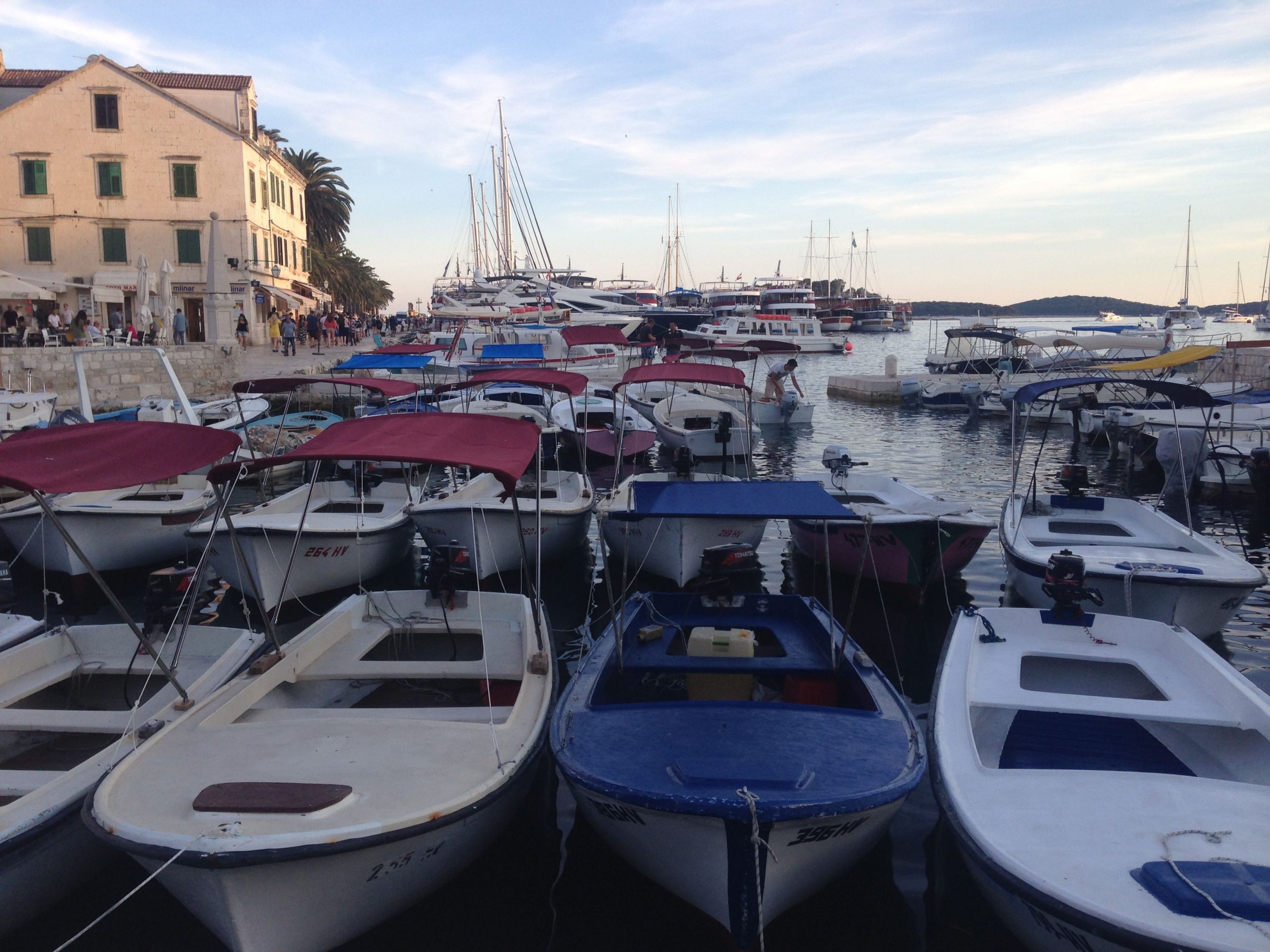
ON THE BOAT
When we got to the boat, there was actually plenty of space for your room to stay organised – loads of cubbies, a small closet, and everything was very functional, which was brilliant. Make sure to keep your portholes closed, especially during sailing.
The one thing that took some getting used to was the bathroom – it’s very small and the toilet bowl functions in a different way than your regular press and flush bathrooms, and you can’t throw toilet paper (or anything, for that matter) in the toilet bowl, but in a trash can. There’s no separate space for a shower, but the entire bathroom is actually one. Most of us showered at marinas when we docked because it was simpler that way.
There was no electricity when we were sailing, only when we docked, so make sure to charge your electronic devices before you leave, and it might be a good idea to bring a portable charger if you have one.
DESTINATION AND ACTIVITIES
Bobovišća
This small village located on the western part of the Island of Brač has only 71 inhabitants, but small beaches line the coast, making it a perfect place to relax and unwind – you can jump into the Adriatic whenever you please and then sit down for a cold beer and a meal at a local pub. Nearby Bol is famous for its beautiful beach, Zlatni rat, and it’s a popular kiting spot.
Vis
Vis is the farthest inhabited island off the Croatian mainland and it has a fascinating military history which you can explore on one of many tours offered there. The island was inhabited in the Greek period, so you’ll see Greek and Roman archaeological sites. Vis museum also has one of the best ancient Amphora collections in the region. A fascinating cave called Blue Grotto is located on the nearby island of Biševo. You can rent a bike or a scooter and drive along the coast.
Palmižana
Palmižana is an inhabited island, part of Paklinski or Pakleni Islands. It’s filled with exotic plants and beautiful beaches, lined with beach bars and restaurants, the most famous of which is Toto’s. You can take a water taxi from here to Hvar, it takes 15 min and costs 100 HRK (both ways.)
Hvar
Hvar is an island known for great wine, lavender fields, and olive oil.
The city of Hvar is the site of one of the oldest surviving theatres in Europe, opened in 1612. The seven-hundred-year-old walls still survive, as do many of the noble houses and public buildings from 15th – 17th centuries. Don’t forget to climb the Spanish Fortress, wander around the Town Square and Piazza (Pjaca), and visit the Cathedral of St. Stephen.
Stari Grad is one of the oldest towns in Europe. The most ancient part of Stari Grad falls within the UNESCO Protected World Heritage Site of the Stari Grad Plain. Visit Tvrdalj, a fortified castle with a fish pond, and take a wine-tasting excursion at a nearby farm, Hora.
Jelsa is another charming small town on the Island of Hvar. The Gradina peninsula has a number of historical sites. Visit St. John’s Church, a small, octagonal church dating from the 17th century. The beautiful Square and surrounding streets are the best preserved part of Renaissance-Baroque Jelsa, with houses from the 16th to 19th century. You can go kayaking or rent a bike and visit nearby Vrboska. Jelsa Wine Festival takes place in the last weekend of August.

Makarska
Makarska is a town on the coast, famous for great clubbing and long, sandy beaches. Visit the Franciscan monastery and its Shell Museum, which has the world’s largest shell collection. There is also the possibility of hiring a jet-ski or parasailing at the beach – if you want to do this, you may want to head down early and book a spot, especially in peak season.
Omiš
Omiš is dominated by two pirate fortresses: Mirabela and Fortica and the Big Beach, with the sea on one side and estuary on the other. Rafting and canoeing on the Cetina River are popular green activities that will take your breath away, and if you’re feeling more adventurous, you can go Zip-lining.
Overall, I managed to survive the trip and loved every minute of it. It felt amazing being off the grid at times, seeing our gorgeous islands (I’d only visited Hvar before the trip), clean the beaches, and being part of a great group of people whom I enjoyed spending time and sharing food and coffee with. The only thing I could’ve done differently is bring less food and fewer striped t-shirts, but, hey, you need to look the part too.

